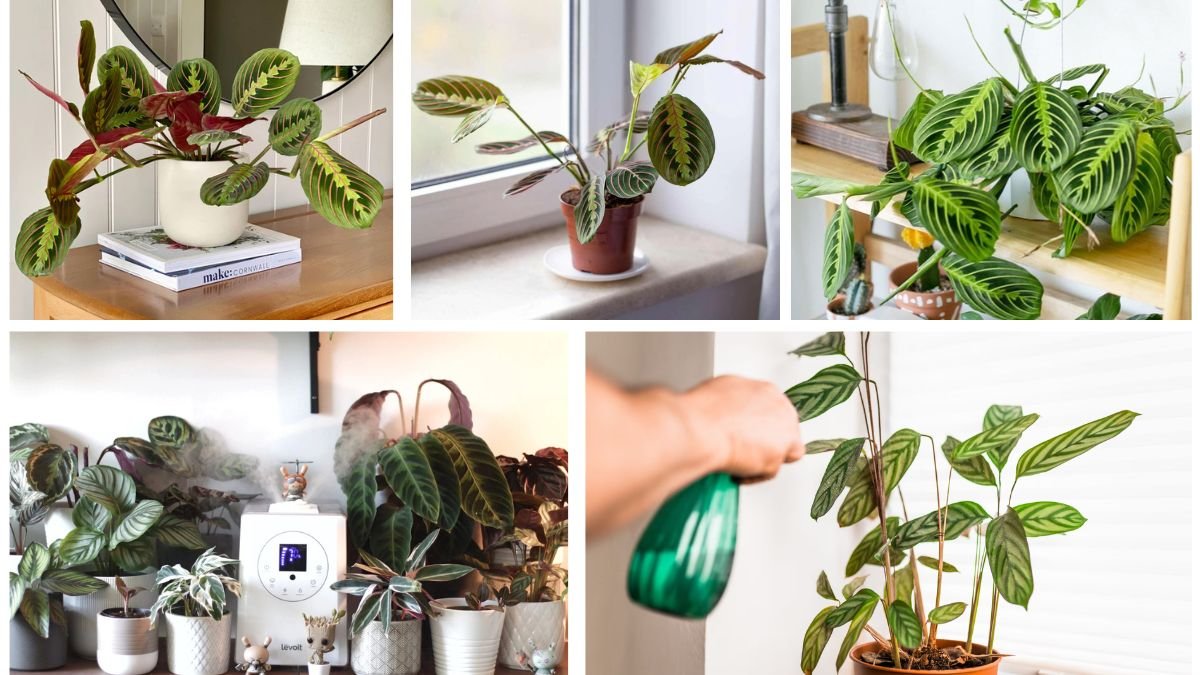Indoor plants are more than just decorative greenery—they can bring life, personality, and tranquility into any home. Among the most striking of them is the Prayer Plant (Maranta leuconeura), known for its vibrant, patterned leaves and fascinating behavior. At night, the leaves fold upward like hands in prayer, giving the plant its unique name.
With its bold veins, colorful markings, and living movements, the prayer plant is a favorite among plant enthusiasts. While it has a reputation for being a little fussy, caring for a prayer plant doesn’t have to be complicated. With the right balance of light, water, humidity, and soil, you can enjoy a lush, vibrant display year-round.
This article explores practical care tips to help you keep your prayer plant thriving indoors, ensuring its foliage remains healthy and full of color.
Understanding the Prayer Plant
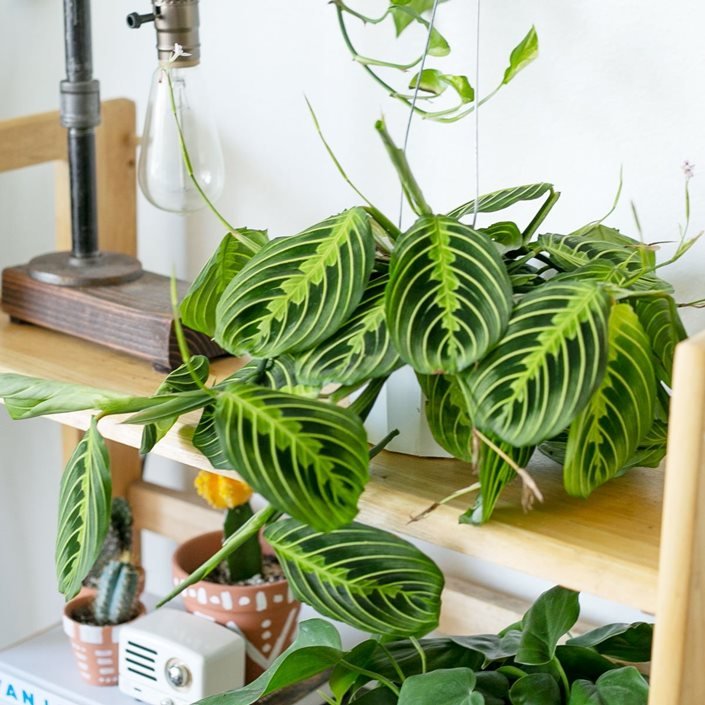
The prayer plant originates from the tropical forests of Brazil, thriving in warm, humid conditions under filtered light. Its unique foliage patterns range from green with red veins to variegated shades of cream, yellow, and purple.
Key features include:
- Nyctinasty behavior: Leaves fold at night and reopen during the day.
- Growth habit: Low-growing, trailing plant that looks stunning in hanging baskets or tabletop planters.
- Longevity: With proper care, prayer plants can live for many years and even spread to form dense, bushy clusters.
Light Requirements: Bright but Gentle
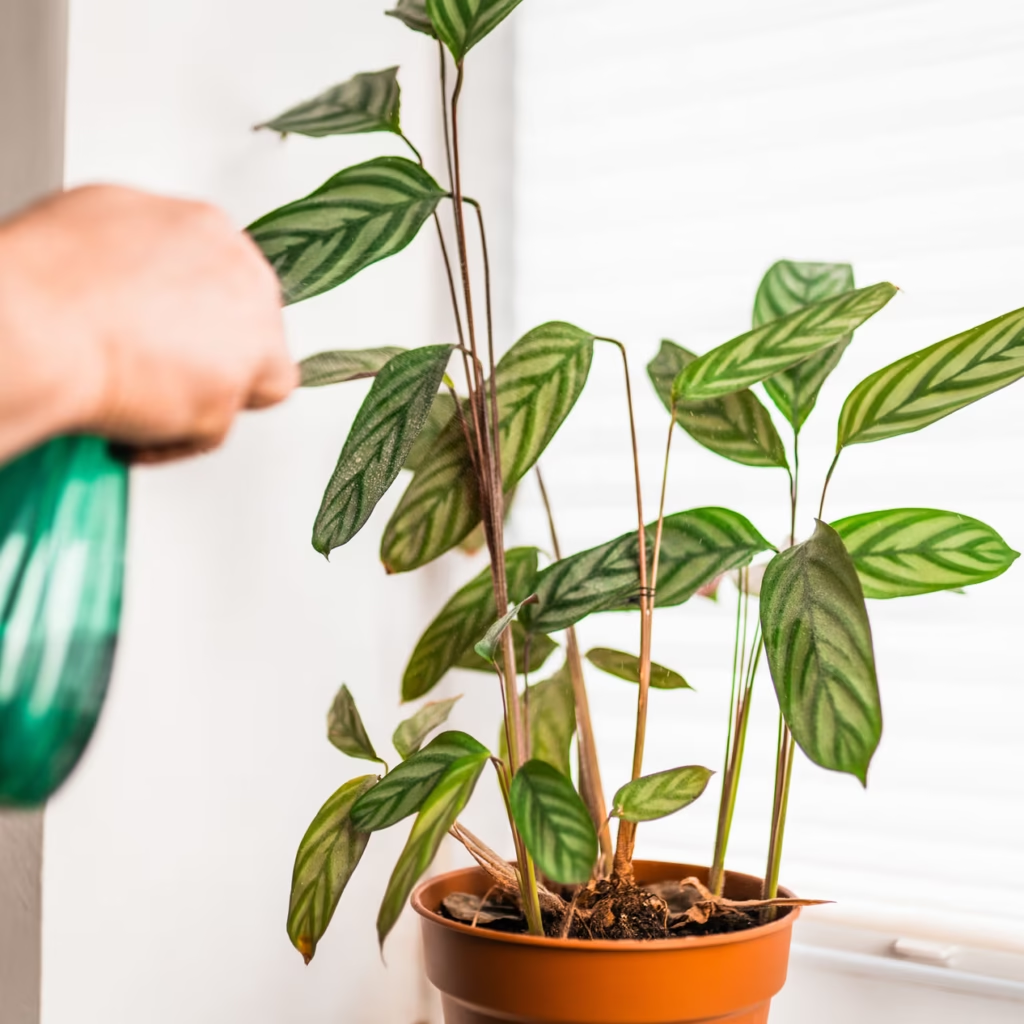
Prayer plants thrive in bright, indirect light. Too much direct sunlight can scorch their delicate leaves, while too little light causes faded patterns and slow growth.
- Best indoor spots: Near east- or north-facing windows. South or west windows are fine if light is filtered with sheer curtains.
- Artificial lighting: Fluorescent or LED grow lights can supplement natural light in darker homes.
Care tip: Rotate your prayer plant weekly to encourage even growth and prevent one side from stretching toward the light.
Watering: Keeping the Balance
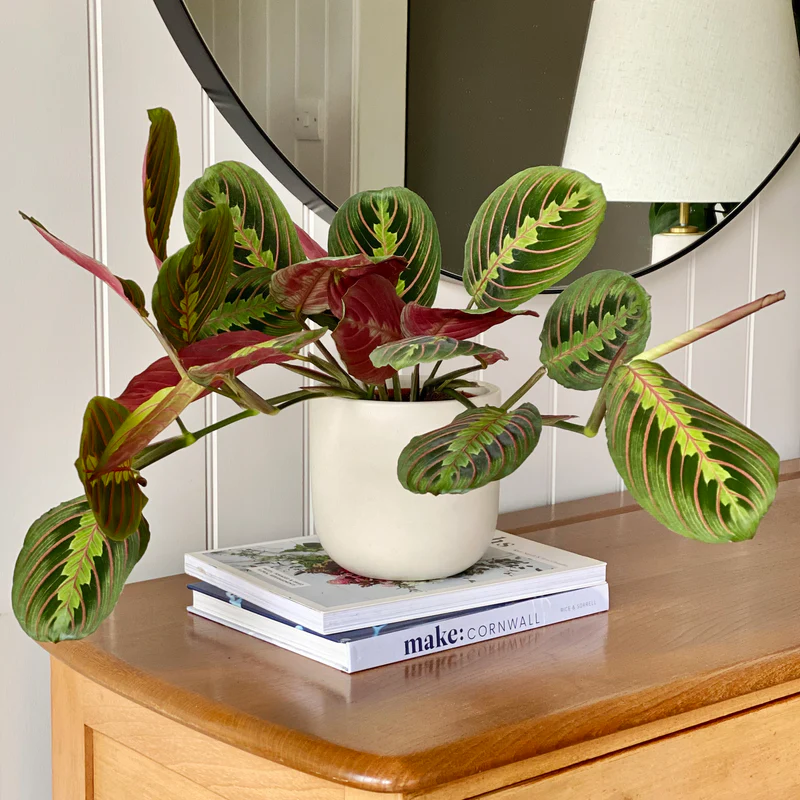
Watering is the trickiest part of prayer plant care. These plants like consistently moist soil, but not soggy conditions.
- Watering schedule: Every 7–10 days during the growing season (spring–summer) and less often in winter.
- Water type: Use distilled, filtered, or rainwater if possible. Tap water with high chlorine or fluoride may cause leaf tips to brown.
- Drainage: Always use pots with drainage holes to prevent root rot.
Care tip: Stick your finger an inch into the soil. If it feels dry, it’s time to water. If it’s still damp, wait a few days.
Signs of improper watering:
- Yellow leaves = overwatering.
- Brown, crispy edges = underwatering or poor water quality.
Soil: The Right Mix for Prayer Plants
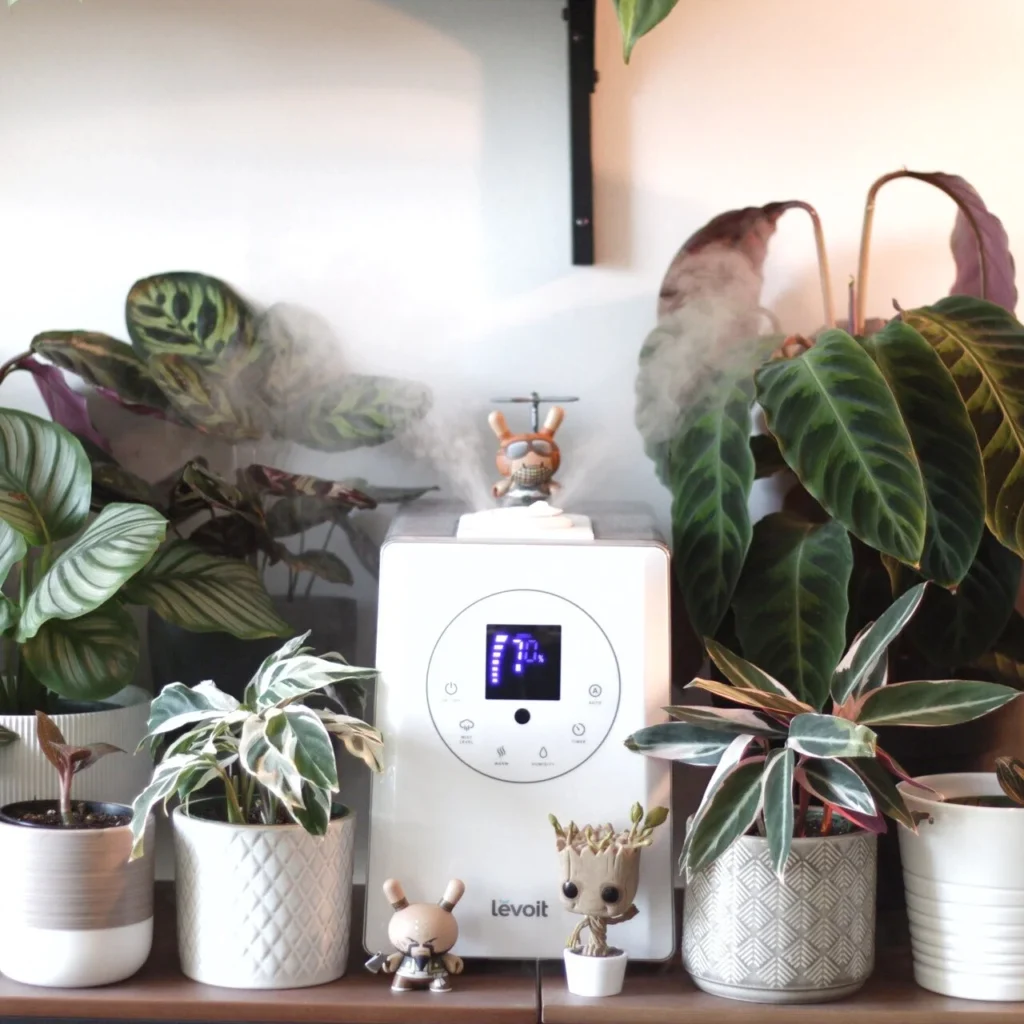
Prayer plants prefer a light, well-draining soil that still retains some moisture.
- Best mix: 2 parts peat-based potting mix + 1 part perlite + 1 part coarse sand.
- Alternative: A high-quality African violet mix works well.
- pH preference: Slightly acidic (6.0–6.5).
Care tip: Add a thin layer of sphagnum moss on top of the soil to help retain moisture and keep roots cool.
Humidity: A Tropical Essential
One of the biggest challenges of growing prayer plants indoors is providing adequate humidity. In their natural rainforest habitat, humidity levels are often above 60%.
- Ideal indoor humidity: 50–60%.
- How to achieve it indoors:
- Use a humidifier near the plant.
- Group plants together to create a moisture-rich microclimate.
- Place the pot on a pebble tray with water (without letting the pot sit in water).
- Mist occasionally, but avoid overdoing it to prevent fungal issues.
Care tip: If your prayer plant’s leaves curl inward during the day, it’s likely craving more humidity.
Temperature: Warm and Stable
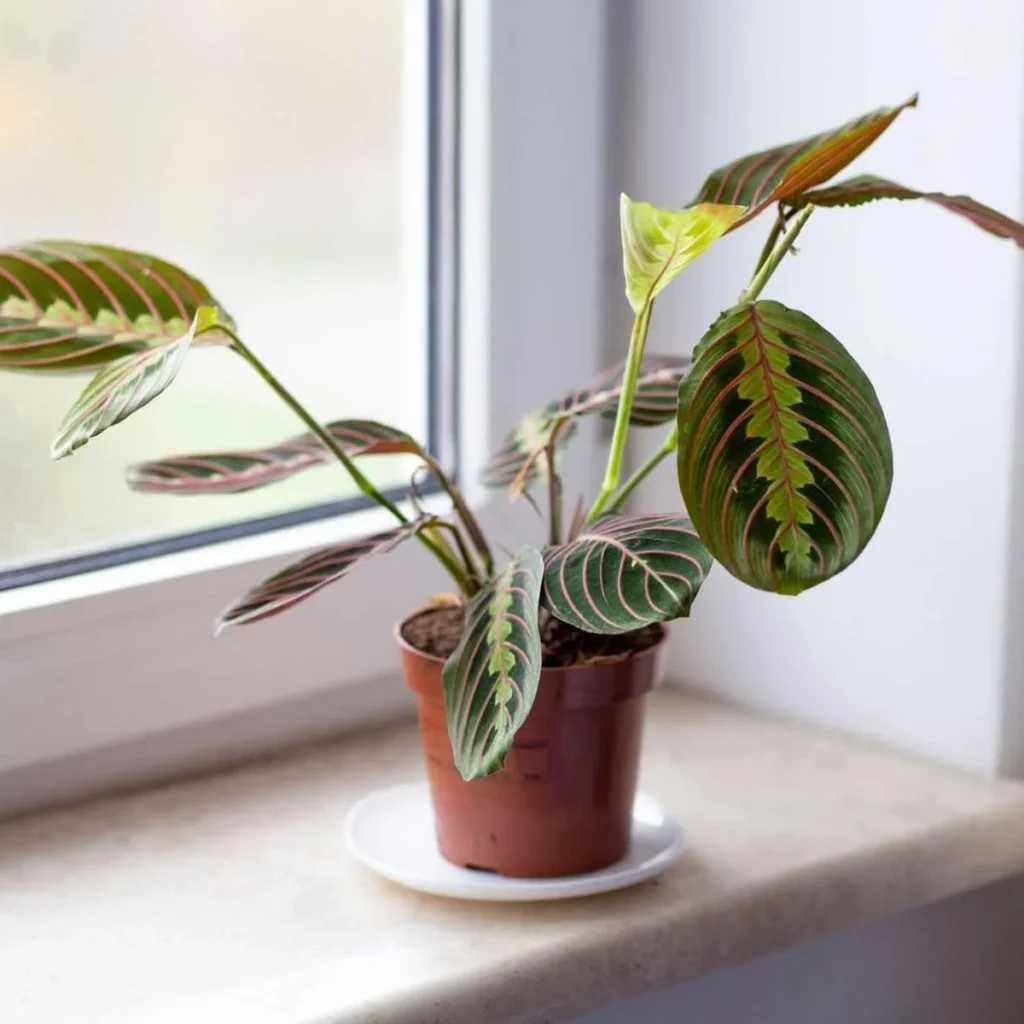
Prayer plants dislike sudden temperature changes. Keep them in a consistent, warm environment.
- Ideal range: 65–80°F (18–27°C).
- Avoid: Drafts, air conditioners, and heaters that cause fluctuations.
- Winter care: Keep them away from cold windows or chilly nights below 60°F (15°C).
Fertilizing: Boosting Vibrant Foliage
Prayer plants are light feeders but appreciate regular nutrition during active growth.
- Fertilizer type: Balanced, water-soluble houseplant fertilizer diluted to half strength.
- Frequency: Every 2–4 weeks in spring and summer.
- Winter: No feeding—plants rest during this period.
Over-fertilizing can burn roots and cause leaf browning, so err on the side of caution.
Pruning and Grooming
Pruning keeps your prayer plant bushy and vibrant.
- Pruning method: Trim leggy stems just above a leaf node to encourage branching.
- Leaf care: Wipe leaves with a damp cloth to remove dust and help with photosynthesis.
- Dead leaves: Remove brown or yellow leaves promptly to prevent pest and disease spread.
Care tip: Use sharp, sterilized scissors to avoid plant stress and infections.
Repotting Prayer Plants
Prayer plants grow slowly, so repotting is only necessary every 2–3 years or when roots start circling the pot.
- Best time: Spring, at the start of the growing season.
- Pot choice: One size larger, with good drainage.
- Repotting process: Gently loosen the root ball, refresh with new soil, and water thoroughly.
Care tip: Divide larger prayer plants during repotting to propagate new plants.
Propagation: Multiply Your Prayer Plant
Prayer plants are easy to propagate, allowing you to expand your indoor jungle or share with friends.
- Division method: The most reliable.
- Remove the plant from its pot.
- Gently separate root clusters.
- Plant divisions in new pots with fresh soil.
- Stem cuttings: Can be rooted in water or moist soil, though slower than division.
Common Prayer Plant Problems and Solutions
- Leaf Curling
- Cause: Low humidity or underwatering.
- Solution: Mist, increase humidity, or adjust watering.
- Brown Tips/Edges
- Cause: Hard water, low humidity, or fertilizer burn.
- Solution: Switch to filtered water, increase humidity, and dilute fertilizer.
- Yellow Leaves
- Cause: Overwatering or poor drainage.
- Solution: Adjust watering routine and check soil.
- Pests (Spider Mites, Mealybugs, Aphids)
- Solution: Wipe leaves with a damp cloth, spray with neem oil, or use insecticidal soap.
- Fungal Issues
- Cause: Overwatering or poor air circulation.
- Solution: Improve airflow, allow soil to dry slightly, and remove affected leaves.
Creative Display Ideas for Prayer Plants
- Hanging baskets: Their trailing stems spill beautifully over the edges.
- Terrariums: Prayer plants thrive in enclosed, humid environments.
- Tabletop displays: Smaller varieties make excellent desk or shelf plants.
- Plant pairings: Combine with ferns, calatheas, or peace lilies for a tropical-themed corner.
Seasonal Care Guide
- Spring: Repot, prune, and resume regular fertilizing.
- Summer: Maintain high humidity and water consistently.
- Fall: Gradually reduce fertilizing as growth slows.
- Winter: Provide bright light indoors, reduce watering, and keep away from cold drafts.
Conclusion
The prayer plant is more than just an ornamental houseplant—it’s a living piece of art that responds to its environment with movement and color. With the right conditions—bright indirect light, consistent moisture, high humidity, and occasional pruning—you can enjoy its vibrant foliage for years to come.
While it may require a bit more attention than a cactus or succulent, the effort is well worth it. A healthy prayer plant not only enhances your home’s aesthetic but also creates a calming, tropical atmosphere indoors. By following these care tips, you’ll ensure that your prayer plant remains lush, colorful, and full of life—bringing joy every time its leaves fold in prayer at night.
